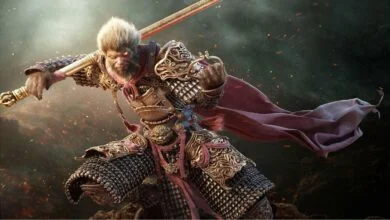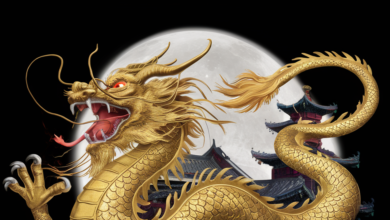
Table of Contents
Introduction to Nuo Opera: Origins and Cultural Significance
Nuo Opera, also known as Ghost Opera, is the oldest ritualistic dance of the Han people, aimed at worshipping gods, exorcising evil spirits, and warding off diseases, representing the joyous entertainment for the gods. This multifaceted art form is characterized by elaborate masks, colorful costumes, rhythmic music, and stylized movements that convey moral lessons and spiritual narratives.
With its origins traced back to the Shang Dynasty over 3,000 years ago, Nuo Opera has evolved over centuries, adapting to various dynasties’ cultural influences and societal changes. Initially performed as a ritualistic practice to ward off malevolent forces, Nuo Opera gradually integrated elements of storytelling, dance, and music, transforming into a rich theatrical tradition that resonates with audiences across different regions in China. The cultural significance of Nuo Opera lies in its ability to preserve ancient customs, promote communal harmony, and serve as a channel for artistic creativity and spiritual contemplation.
Historical Evolution of Nuo Opera Tradition
Nuo opera traces its roots back to ancient China, with a rich history spanning over a thousand years. It originated in the Shang dynasty and gradually evolved through the Zhou, Qin, and Han dynasties, incorporating elements of shamanistic rituals, exorcism practices, and folk beliefs. The tradition flourished during the Tang and Song dynasties, becoming a prominent form of folk performance in rural communities across the country.
During the Ming and Qing dynasties, Nuo opera underwent further development and refinement, with distinct regional variations emerging in different parts of China. These variations added depth and diversity to the art form, showcasing the fusion of local customs, music, and storytelling techniques. Nuo opera became deeply intertwined with Chinese cultural heritage, embodying the spiritual essence of the people and serving as a medium for conveying moral lessons and historical narratives.
Characteristics of Nuo Opera Performance
Amidst the vibrant tapestry of Chinese opera traditions, Nuo Opera stands out for its unique characteristics that captivate audiences with its mystical allure. The distinct and elaborate masks worn by performers play a crucial role in portraying various characters, each mask symbolizing different traits and emotions. These masks, combined with elaborate costumes and intricate movements, create a visual spectacle that is both mesmerizing and enchanting for spectators.

Moreover, Nuo Opera performances are characterized by their fusion of music, dance, and intricate choreography, seamlessly weaving together storytelling with artistic expression. The use of exaggerated gestures and movements adds a dramatic flair to the performance, enhancing the overall theatrical experience. The incorporation of traditional instruments such as drums, gongs, and cymbals creates a dynamic and immersive auditory experience, heightening the emotional impact of the narrative being enacted on stage.
Themes and Symbolism in Nuo Opera
In Nuo opera, the themes and symbolism play crucial roles in conveying deeper meanings and cultural beliefs. Common themes include exorcism, ancestor worship, and the battle between good and evil. These themes are often depicted through elaborate costumes, intricate masks, and rhythmic movements that symbolize spiritual forces at play.

Symbolism in Nuo opera is rich and multi-layered, with colors, gestures, and props carrying significant meanings. The color red, for example, symbolizes vitality and protection, while black represents evil spirits. Masks are not just ornamental but serve as powerful symbols of transformation and disguise, showcasing the complexities of human nature and the constant struggle between light and darkness. Through these symbolic elements, Nuo opera weaves a tapestry of cultural heritage and spiritual wisdom for audiences to unravel and contemplate.
Ritualistic Elements and Spiritual Significance
Nuo Opera is deeply rooted in ritualistic practices that hold profound spiritual significance. The incorporation of intricate masks, elaborate costumes, and stylized movements all contribute to the ceremonial nature of Nuo performances. These ritualistic elements serve not only as visually captivating aspects but also as channels for connecting with ancestral spirits and invoking divine blessings for the community.
Spiritual symbolism permeates every aspect of Nuo Opera, from the characters portrayed to the stories enacted on stage. The themes often revolve around exorcising malevolent forces, purifying the environment, and ensuring prosperity and well-being for the people. Through these symbolic representations, Nuo Opera transcends mere entertainment, serving as a sacred art form that seeks to maintain harmony between the human world and the spiritual realm.
Influence of Nuo Opera on Chinese Performing Arts
Nuo Opera has significantly impacted various forms of Chinese performing arts by serving as a foundational element in shaping cultural expressions. Its intricate blend of music, dance, and theatrical elements has set a precedent for storytelling techniques, influencing traditional Chinese opera styles like Peking Opera and Kunqu Opera. The elaborate costumes and masks used in Nuo Opera have inspired costume design in other performance arts, adding layers of symbolism and visual appeal to the stage.
Furthermore, the ritualistic and spiritual aspects of Nuo Opera have deeply influenced the thematic content and performance styles of other Chinese performing arts. The incorporation of religious beliefs, folklore, and supernatural elements in Nuo Opera narratives has contributed to the rich tapestry of storytelling in Chinese theater, fostering a sense of tradition and cultural heritage in performances across different regions of China.
Modern Adaptations and Innovations in Nuo Opera

In contemporary times, Nuo Opera has witnessed a surge in creative interpretations and modern adaptations, breathing new life into this ancient art form. Artists and directors are experimenting with innovative staging techniques, incorporating multimedia elements, and collaborating with diverse artistic disciplines to attract a younger audience and make Nuo Opera more accessible to a modern society. These bold initiatives have succeeded in revitalizing Nuo Opera, appealing to a broader demographic while still preserving its deep-rooted cultural essence.
Furthermore, modern adaptations of Nuo Opera often explore current social issues and contemporary themes, adding layers of relevance and relatability to the traditional narratives. By blending traditional aesthetics with avant-garde concepts, Nuo Opera is evolving into a dynamic and adaptive art form that bridges the gap between past and present, tradition and innovation. Through these modern interpretations, Nuo Opera continues to evolve, demonstrating its enduring relevance and ability to resonate with audiences in a rapidly changing world.
Preservation Efforts and Challenges Facing Nuo Opera
Preservation efforts for Nuo Opera have been steadily increasing in China in recent years. Various cultural organizations and government bodies have allocated resources to document, study, and safeguard this traditional art form. Through initiatives such as digitizing scripts, recording performances, and establishing Nuo Opera troupes, a concerted effort is being made to ensure that this unique cultural heritage is preserved for future generations. However, despite these efforts, challenges persist in the preservation of Nuo Opera.
One significant challenge is the diminishing number of skilled practitioners and master artists who possess the knowledge and expertise required to perform Nuo Opera authentically. The transmission of this art form from one generation to the next is at risk due to the lack of apprenticeships and formal training programs. Additionally, the commercialization and modernization of the entertainment industry pose threats to the traditional practices and rituals associated with Nuo Opera. Balancing the need to adapt to contemporary audiences while preserving the essence of Nuo Opera presents a delicate challenge for those seeking to ensure its continuity.
International Recognition and Global Impact
Nuo Opera has garnered international recognition in recent years, with performances showcased at prestigious cultural events worldwide. Its unique blend of elaborate costumes, mesmerizing masks, and intricate choreography has captivated audiences beyond China’s borders. Scholars and art enthusiasts alike have praised Nuo Opera for its rich historical roots and spiritual depth, resonating with diverse global audiences.
The global impact of Nuo Opera extends beyond its traditional roots, inspiring artists and performers to explore new creative possibilities. Collaborations with international theater groups and cultural institutions have propelled Nuo Opera onto the global stage, fostering cross-cultural exchanges and artistic dialogues. As Nuo Opera continues to gain momentum on the international scene, its enduring legacy as a cultural treasure of China shines brightly on the world stage.
Nuo Opera’s Enduring Legacy and Future Prospects
Nuo Opera, deeply rooted in tradition and rich in cultural symbolism, continues to captivate audiences worldwide with its unique blend of performance art and spiritual significance. Its enduring legacy lies in its ability to preserve ancient rituals and beliefs while evolving to adapt to modern times. As Nuo Opera gains international recognition, its future prospects are promising, with growing interest in its preservation and innovative adaptations.
With the ongoing efforts to safeguard and promote Nuo Opera, the tradition is poised to thrive for generations to come. As artists and scholars delve deeper into its historical origins and ritualistic elements, Nuo Opera’s global impact is expanding, shedding light on a vital aspect of Chinese performing arts. The legacy of Nuo Opera is secure, poised to inspire audiences and artists alike to explore its themes and symbolism, ensuring its relevance in the ever-changing landscape of the modern world.


